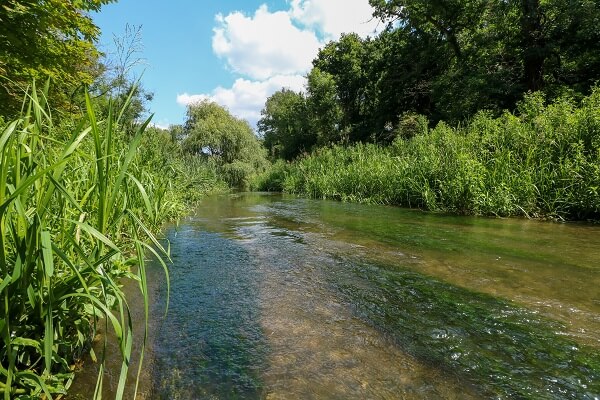Climate Action Needs Nature, Nature Needs Climate Action

‘Climate action needs nature. Nature needs climate action. Neither will succeed if we don’t prepare for a changing world.’ The Wildlife Trusts’ COP26 report says it’s time to tackle the twin crises at speed.
The Wildlife Trusts are calling on the UK Presidency of the global climate conference COP26 to tackle the nature crisis alongside the climate emergency – or neither will be solved. The charity published a COP26 edition of its nature-based solutions report, Let Nature Help. It explains how climate change is driving nature’s decline, whilst the loss of wildlife and habitats leaves us ill-equipped to reduce emissions and adapt to a changing world.
Lesley Davies, chief executive of Herts and Middlesex Wildlife Trust, says: ‘The climate crisis cannot be solved without prioritising nature’s recovery. Over the last 50 years we have lost two wild species every year in Hertfordshire and a part of this is driven by climate change. Wild places such as woodlands and wetlands are excellent at trapping and storing carbon and so can be a part of the solution.
‘We need to create and restore more natural habitats in Hertfordshire. The Trust is calling for 30% of the county’s land to be managed and protected for nature’s recovery by 2030, but currently there is just 16% of natural habitat. Everyone can play their part in creating more space for wildlife across the UK.’
Craig Bennett, chief executive of The Wildlife Trusts, says: ‘Net zero needs nature. Nature needs net zero. Both need to be resilient to the climate of the future. Nature’s fantastic ability to trap carbon safely and provide other important benefits is proven – peatland, woodland, saltmarsh and other wild habitats are vital carbon stores. But these natural places are in decline and face even greater risk of degradation from the extreme climatic conditions that are already inevitable over the next 30 years. It’s becoming a vicious spiral of damage – one that has to be stopped right now.
‘In addition to the urgent task of cutting emissions at source, we need to see an enormous rise in the amount of land and sea that’s protected for nature – and increase it to at least 30% by 2030. Also, the Government must embed climate action – mitigation and adaptation – across every department and take urgent steps to stop carbon-emitting activities such as new road building, peat burning and trawling the seabed.’
The Wildlife Trusts call on the Government to:
PEAT
- Significantly increase peatland restoration and repair 100% upland peat before 2050
- Implement an immediate ban on peatland burning and end farming on deep peat
- Ban the sale and use of peat in gardening and compost products, including imports
FARMING
- Give a boost to sustainable farming that locks carbon into the soil and helps wildlife
- Publish details on how Environmental Land Management Scheme will incentivise farmers to manage their land for nature-based solutions
WOODLAND
- Increase the natural regeneration of woods and where this cannot be done, plant resilient native trees instead
- Ensure a mix of trees are planted in every location so as to have the best chance of survival in unpredictable conditions and in the face of increased pests and diseases
PLANNING
- Make more space for nature everywhere including in towns and new developments. By 2030 we need to have protected 30% of our land and seas for nature. Create a new designation, Wildbelt, which protects places, including degraded land, that is put in recovery for nature
- Ensure that planning reforms deliver the Government’s legally binding target in the Environment Bill to halt species decline by 2030
Kathryn Brown, director of climate action at The Wildlife Trusts says: ‘There are simple and easy things that we can all do to reduce our carbon footprint, adapt to climate change and make a big difference to the natural world – such as to reconsider what we eat, how we travel and how we use resources like water and energy.
‘We can also help nature and do ourselves a favour by planting more around our homes to lower high summer temperatures and soak up floodwater – and reduce the amount of water we use to help save our precious rivers and the wildlife that depends on them.
‘The Government largely treats mitigation and adaptation separately – but they must be considered together because adaptation is fundamental to reaching net zero. We need to see policies to improve the resilience of natural carbon stores – such as reducing the risk of wildfire, addressing the threats to freshwater habitats, and giving guidance on managing woodlands and farmland during hot weather and drought.’
Read a copy of The Wildlife Trust’s COP26 edition of Let Nature Help report here.

